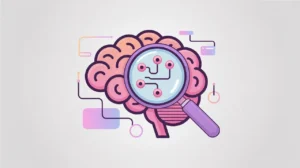Importance of Data Pipelines
Data pipelines are the structured processes that move data from its source through stages of cleaning, transformation, and storage before it is used in AI models or applications. Their importance today lies in the recognition that AI is only as reliable as the data that feeds it. Without well-designed pipelines, systems risk producing outputs that are inaccurate, biased, or incomplete.
For social innovation and international development, data pipelines matter because many organizations work with fragmented, messy, or analog data. Effective pipelines allow them to streamline collection, ensure data quality, and build trustworthy systems that reflect the realities of the communities they serve.
Definition and Key Features
A data pipeline consists of sequential steps that automate the flow of information. These often include data ingestion from sensors, surveys, or digital platforms; preprocessing steps such as deduplication and normalization; transformation into standardized formats; and loading into databases or warehouses for storage and analysis.
They are not the same as simple data transfers, which move information without cleaning or structuring it. Nor are they equivalent to analytics dashboards, which sit downstream. Instead, pipelines are the invisible infrastructure that prepares raw inputs so they can be meaningfully used by AI models, researchers, or decision-makers.
How this Works in Practice
In practice, data pipelines are implemented using tools and frameworks that handle extraction, transformation, and loading (ETL) or newer approaches like ELT. Cloud-based platforms allow for scalable pipelines, while edge solutions support environments with intermittent connectivity. Automation ensures data moves continuously, reducing delays and errors that occur with manual handling.
Challenges include maintaining data quality, ensuring security at every stage, and accommodating multiple formats from diverse sources. When pipelines are poorly designed, biases can be amplified, or critical information may be lost. Well-engineered pipelines, on the other hand, increase reliability, transparency, and the potential for responsible AI.
Implications for Social Innovators
Data pipelines are central to mission-driven applications. Health systems use them to integrate patient records from clinics, enabling more accurate diagnostics and policy planning. Education programs rely on them to process student performance data from schools into adaptive learning platforms. Humanitarian organizations use pipelines to combine survey responses, satellite imagery, and field reports into coherent datasets that inform rapid response.
Strong data pipelines turn fragmented information into reliable foundations, allowing organizations to build AI systems that are accurate, inclusive, and actionable.







